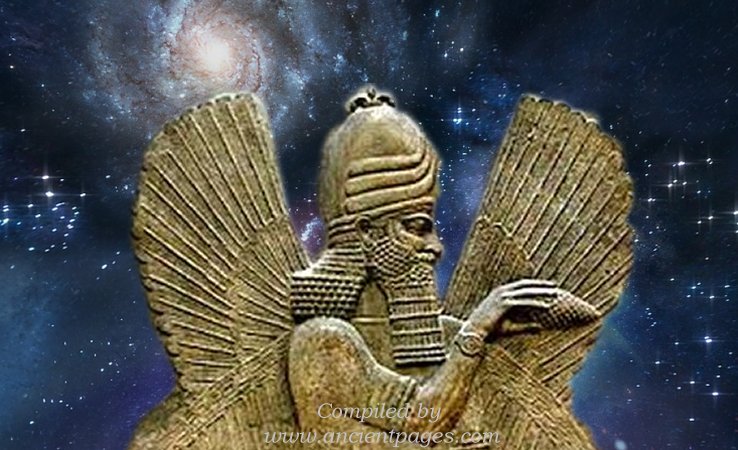The Marduk Prophecy Of Babylonian King Nebuchadnezzar I And The Stolen Statue Of A God
Ellen Lloyd - AncientPages.com - As the son of the mighty god Enki, creator and protector of humanity, Marduk plays an important role in Mesopotamian mythology and the history of Babylon.
Babylon was the "sacred city" dedicated to the cult of Marduk, who had his temple there and a golden statue. In ancient times, Babylon was considered almost the “center of the world.” Even, Alexander the Great was charmed by its beauty and power.
From an ancient Assyrian text known as the “Marduk Prophecy”, also referred to as the “Sulgi Prophecies,” one can learn about Marduk’s journeys to the lands of the Hittites, Assyrians, and Elamites and the prediction of a future king who will lead Marduk back from Elam, an ancient country in southwestern Iran.

Babylon was the "sacred city" dedicated to the cult of Marduk, who had there his temple and a golden statue.
According to historians, the Marduk Prophecy was written sometime between 713-612 B.C. The ancient document was unearthed in the House of the Exorcist close to a temple in the city of Ashur, the first capital of the Assyrian Empire.
Since this document was most likely written during the reign of King Nebuchadnezzar I, most historians suggest it served as a propaganda piece to celebrate his victory.
The Marduk prophecy describes the return of a strong and powerful king who will restore peace and order to the city by bringing home the statue of the god.
Detail from kudurru of Nebuchadnezzar granting Šitti-Marduk freedom from taxation. Credit: Public Domain
King Nebuchadnezzar I “marched into Elam and repatriated the stolen statue of Marduk”. 1 The Babylonian King List informs he ruled for 22 years, and one kudurru reveals King Nebuchadnezzar I retrieved the statue of god Marduk during his battle against the Elamites. 2
Babylonians had the so-called 'kudurrus', stone steles that were sculpted and carved with inscriptions. They were important not only for economic and religious reasons but also as almost the only works of art, which survived from the period of Kassite rule in Babylonia (c. 16th-c. 12th century BC). Many significant historical events were inscribed on these kudurrus.
Although most think the Marduk Prophecy was written as a tribute to King Nebuchadnezzar I, it’s also possible the document served another purpose.
Interestingly, while excavating in the House of the Exorcist, archaeologists found several cuneiform tablets that also relate to other events.
“Apart from the “Marduk Prophecy,” the inventory includes no text relevant to Nebuchadnezzar’s Elamite campaign which is likely to have been the primary concern of the author of our text, but there are some texts proclaiming the superiority of the Assyrian chief deity Assur over Marduk (e.g. the “Marduk Ordeal”).
This suggests that the owner of the Assur exemplar had far more interest in theological reflection on the relationship between the Assyrian and the Babylonian state gods, which was presumably stimulated by the Assyrian abduction of the Marduk statue under Sennacherib (689 B.C.), than in the triumph of Nebuchadnezzar.” 1
This has led some to speculate whether the Marduk Prophecy was perhaps written in connection as to how Marduk should be evaluated in relation to the god Assur, the most important deity of the Assyrian capital Ashur.
Ashur, the chief god of the Assyrian pantheon in Mesopotamian religion, worshipped mainly in the northern half of Mesopotamia, and parts of north-east Syria and south-east Asia Minor (old Assyria). A close-up view of a wall relief depicting the God Ashur (Assur) inside a winged- disc. The hands of Ashurbanipal II partially appear (who makes a gesture of worship to the God Ashur). Credit: Osama Shukir Muhammed Amin FRCP(Glasg) - CC BY-SA 4.0
The prophecy also contains astrological omen texts and mentions certain ancient places associated with specific constellations.
Many predictions in the Marduk and Sulgi prophecies, as well as in the Uruk Prophecy, likewise have exact parallel in the astrological corpus.” 3
Since Babylonians and Sumerians had advanced knowledge of astronomy, it’s not surprising to discover they relied on celestial objects for a number of reasons, and there are specific parallels between prophecy predictions, astrological omens, and astronomical events.
Written by Ellen Lloyd – AncientPages.com
Updated on July 10, 2021
Copyright © AncientPages.com All rights reserved. This material may not be published, broadcast, rewritten or redistributed in whole or part without the express written permission of AncientPages.com
Expand for references- Takuma Sugie. The Reception of the Marduk Prophecy in Seventh-Century B.C. Nineveh. Orient. 2014, Vol.49, No.0, p.107.
- Benjamin R. Foster - Before the Muses: An Anthology of Akkadian Literature
- Biggs, Robert D. "The Babylonian Prophecies and the Astrological Traditions of Mesopotamia." Journal of Cuneiform Studies37, no. 1 (1985): 86-90. doi:10.2307/1359960.
More From Ancient Pages
-
 What America’s First Board Game Can Teach Us About The Aspirations Of A Young Nation
Featured Stories | Jun 6, 2024
What America’s First Board Game Can Teach Us About The Aspirations Of A Young Nation
Featured Stories | Jun 6, 2024 -
 Ancient Secrets Of The Masters Of Mu – Keepers Of Sacred Knowledge – Part 2
Featured Stories | Aug 25, 2018
Ancient Secrets Of The Masters Of Mu – Keepers Of Sacred Knowledge – Part 2
Featured Stories | Aug 25, 2018 -
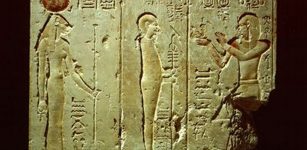 Egyptian Temple Culture In Ptolemaic-Era Survived Changes And Became Even Stronger – Researcher Says
Archaeology | Mar 1, 2017
Egyptian Temple Culture In Ptolemaic-Era Survived Changes And Became Even Stronger – Researcher Says
Archaeology | Mar 1, 2017 -
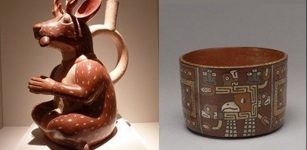 Genes And Languages: Development Of Pre-Incan Culture In Central Andes
News | Oct 26, 2020
Genes And Languages: Development Of Pre-Incan Culture In Central Andes
News | Oct 26, 2020 -
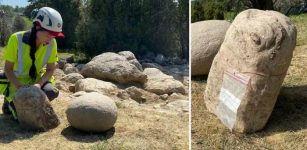 Unusual Discovery Of A Viking Age Phallic Stone In Tystberga, Sweden
Archaeology | Jun 12, 2023
Unusual Discovery Of A Viking Age Phallic Stone In Tystberga, Sweden
Archaeology | Jun 12, 2023 -
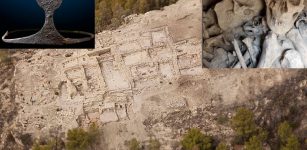 El Argar Civilization: Bronze Age Palace And Grave Goods Unearthed In Spain’s La Almoloya
Archaeology | Oct 15, 2014
El Argar Civilization: Bronze Age Palace And Grave Goods Unearthed In Spain’s La Almoloya
Archaeology | Oct 15, 2014 -
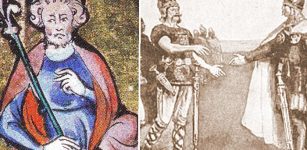 Battle Of Assandun: The Great Battle In English History And A Brief Period Of Viking Dominion In England
Featured Stories | Apr 11, 2016
Battle Of Assandun: The Great Battle In English History And A Brief Period Of Viking Dominion In England
Featured Stories | Apr 11, 2016 -
 Young Boy Discovers Rare Ancient Roman Treasure In Sussex, UK
Archaeology | Apr 15, 2024
Young Boy Discovers Rare Ancient Roman Treasure In Sussex, UK
Archaeology | Apr 15, 2024 -
 L’Anse Aux Meadows – Viking Site Confirms Norse Vinland Sagas Were Based On Real Events
Featured Stories | Jun 10, 2021
L’Anse Aux Meadows – Viking Site Confirms Norse Vinland Sagas Were Based On Real Events
Featured Stories | Jun 10, 2021 -
 Evidence Of Rare Roman-Celtic Temple Near Lancaster Castle
Archaeology | Mar 9, 2023
Evidence Of Rare Roman-Celtic Temple Near Lancaster Castle
Archaeology | Mar 9, 2023 -
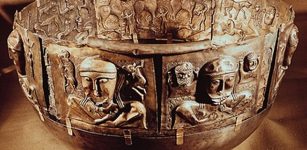 Gundestrup Cauldron: Great Gilded Silver Vessel Decorated With Scenes Derived From Celtic Mythology
Artifacts | May 30, 2016
Gundestrup Cauldron: Great Gilded Silver Vessel Decorated With Scenes Derived From Celtic Mythology
Artifacts | May 30, 2016 -
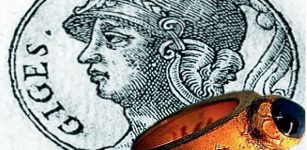 Magical Ring Of Gyges And Its Power To Be Invisible At Will
Featured Stories | Feb 16, 2023
Magical Ring Of Gyges And Its Power To Be Invisible At Will
Featured Stories | Feb 16, 2023 -
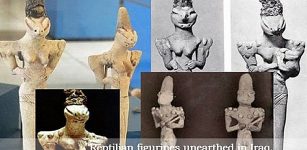 The Mystery Of The Serpent Seed
Biblical Mysteries | Jul 19, 2019
The Mystery Of The Serpent Seed
Biblical Mysteries | Jul 19, 2019 -
 Top 10 Archaeological Discoveries 2023
Archaeology | Dec 27, 2023
Top 10 Archaeological Discoveries 2023
Archaeology | Dec 27, 2023 -
 Prehistoric Spread Of Millet From East Asia To Central Europe – New Study
Archaeology | Jun 10, 2022
Prehistoric Spread Of Millet From East Asia To Central Europe – New Study
Archaeology | Jun 10, 2022 -
 Underground Ancient City Of Kish And Its Advanced Hydraulics System
Ancient Technology | Aug 28, 2015
Underground Ancient City Of Kish And Its Advanced Hydraulics System
Ancient Technology | Aug 28, 2015 -
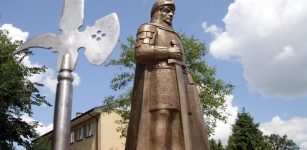 Zawisza Czarny: Most Famous Polish Knight And The Quest For His Family Home
Featured Stories | Apr 26, 2016
Zawisza Czarny: Most Famous Polish Knight And The Quest For His Family Home
Featured Stories | Apr 26, 2016 -
 Massive Eruption Of Iceland’s Laki Volcano Triggered An Unusually Cold Winter In 1783-84
Archaeology | May 21, 2019
Massive Eruption Of Iceland’s Laki Volcano Triggered An Unusually Cold Winter In 1783-84
Archaeology | May 21, 2019 -
 2000-Year-Old Tomb Discovered In Northwestern China
Archaeology | Dec 7, 2015
2000-Year-Old Tomb Discovered In Northwestern China
Archaeology | Dec 7, 2015 -
 Fascinating Discovery – First Female Viking Grave Discovered In Swedish Mountains
Archaeology | Aug 20, 2022
Fascinating Discovery – First Female Viking Grave Discovered In Swedish Mountains
Archaeology | Aug 20, 2022


